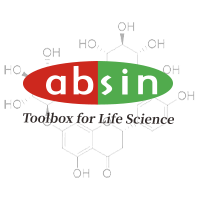Product Details
Product Details
Product Specification
| Usage |
Methods of use and testing procedures: 1. Add the cells to be detected and AIM V serum-free medium to each well of the cell culture dish or cell culture plate, and the cell concentration is 0.8 × 106-2×106Cells/mL. Considering the cell loss and the accuracy of flow cytometry detection, it is recommended to use at least 1 million cells. It is recommended to use 12-well plate or 24-well plate culture, and use at least 1-2mL of culture medium. 2. Add nanoparticles resuspended with PBS or corresponding medium to it. The final concentration of nanoparticles detected in this detection kit is 0.5 mg/mL-1. 0 mg/mL. 3. The nanoparticles were incubated with the cells to be detected for 32-48 hours. It is recommended that at least two replicates of the sample to be tested be set; Negative and positive controls need to be set up.Note:The final concentration of nanoparticles when co-incubated with cells was 0.5 mg/mL-1. 0 mg/mL; Cells not cultured with nano particles at the time of detection were used as negative controls; Cells cultured after adding T cell stimulators such as LPS (generally stimulated with LPS for 8-16 hours) are used as positive controls. 4. Add Brefeldin A Solution (BFA) (1000 × diluted into cell culture medium) to the culture medium and incubate for a total of 4 h. 5. Use a pipette to pipette the suspended cells in the collection medium. After collecting the cells, centrifuge the sample cells at 400-500g for 5min. Discard the supernatant and collect the cells. 6. After collecting the cells, resuspend the sample cells in 1 mL PBS. 7. In addition to the blank control, add 2μL of live and dead cell dye to each sample to label live cells and dead cells, mix evenly, and incubate on ice for 15-30 minutes in the dark. 8. After incubation, centrifuge at 400-500g for 5 min, and resuspend the cells with 100μL FACS buffer. 9. Except for the blank control. Add 2 μL Fc Block to each sample to block the Fc receptor on the surface of immune cells, mix well and incubate on ice for 5 min. 10. After incubation, add corresponding membrane-labeled antibodies (CD3, CD4, CD8 antibodies) labeled with different fluorescent dyes to each tube, and incubate on ice for 15-30 minutes. 11. Add 500μL of 4% paraformaldehyde directly to fix the cells and incubate on ice for 40-60 minutes. 12. Centrifuge at 400-500g for 5min, discard the supernatant, then add 100μL of membrane breaking agent to resuspend the cells, and incubate on ice for 30min. 13. After incubation, add the corresponding fluorescent dye-labeled IFN-γ antibody and/or granzyme B (GzmB) antibody to each tube, and incubate on ice for 30 minutes. 14. Centrifuge at 400-500g for 5min, discard the supernatant, resuspend the cells with 200μL FACS buffer or fix the cells with 500μL 4% paraformaldehyde, incubate on ice for 40-60min before detection. 15. Flow cytometry is used to detect the proportion of cells positive for the labeled antibody. (Note: Test after the 400-mesh filter cloth is tested on the machine). 16. Use flow cytometry analysis software to analyze the proportion of CD3 + IFN-γ +, CD3+CD4 + IFN-γ + and CD3+CD8 + IFN-γ + T cells in living cells to the corresponding cells, that is, the proportion and content of tumor antigen-specific T cells (the more cells, the more accurate the detection. It is recommended that the number of living cells collected during detection is more than 100,000, and the number of living cells collected is preferably more than 200,000). |
|||||||||
| Description |
Product Description Tumor antigen-specific T cells are the main force in killing cancer cells. Due to the high heterogeneity of cancer cells and tumor antigens, cancer cells do not have one or more dominant antigens, so there are few dominant antigen-specific T cells. However, the traditional use of several polypeptide antigens or MHC tetramer technology to detect tumor antigen-specific T cells can only detect antigen-specific T cells against several known specific antigens. This product detects the whole cell antigen of cancer cells loaded with nanoparticles. The types of antigens are comprehensive, diverse and broad-spectrum, and can comprehensively and accurately detect tumor antigen-specific T cells in different tissues. It has the advantages of high specificity, high accuracy, comprehensive types of tumor antigen-specific T cells detected, and the like. Test samples: 1. The content of tumor antigen-specific T cells in peripheral blood immune cells (please use heparin sodium as blood anticoagulant, do not use EDTA for anticoagulation, 5-7mL peripheral blood is required); 2. The content of tumor antigen-specific T cells in splenocytes; 3. The content of tumor antigen-specific T cells in lymph node cells; 4. The content of tumor antigen-specific T cells in tumor tissue cells; |
|||||||||
| Composition |
|
|||||||||
| General Notes |
1. This product is only for in vitro testing, and cannot be edible or injected; Please keep away from the reach of children. 2. Ready to prepare and use, once the nanoparticles are resuspended with AIM V serum-free medium or PBS, immediately add them to the cells to be tested and mix. 3. During use, the fluorescent probes of different antibodies used can be freely matched as needed. 4. Please place the fixed cells at 4 °C and complete the test within one week. |
|||||||||
| Storage Temp. | This product is easy to absorb moisture, frozen at-20 ℃ ~-80 ℃, sealed and dry, and has a validity period of 1 year.
|


